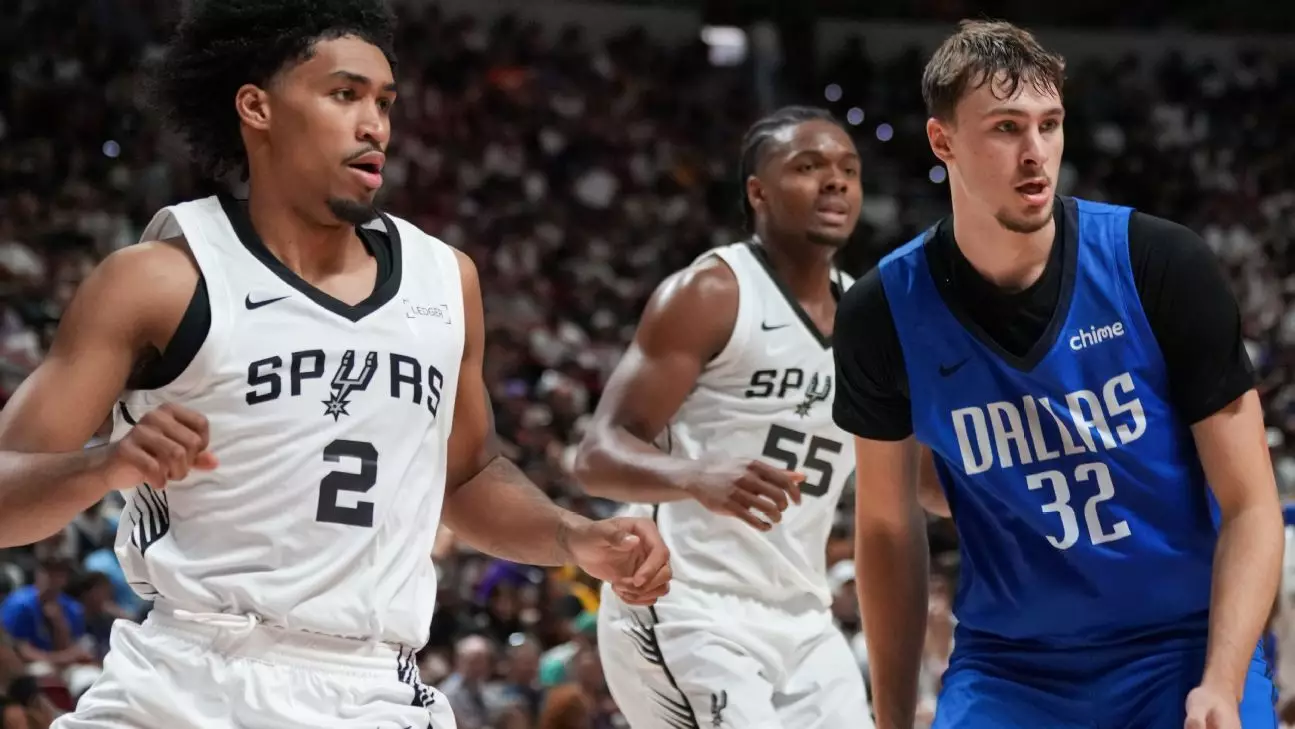In the electrifying atmosphere of the NBA summer league, the anticipated clash between the top two prospects of 2025—Cooper Flagg and Dylan Harper—offered a tantalizing glimpse into the league’s future. Yet, beneath the surface of highlight reels and social media buzz lies a sobering reality: hype can often outpace substance. While both players demonstrated flashes of brilliance that captivated spectators, their performances also revealed the fragility of expectations placed on adolescent talents. Critics often romanticize the potential of young athletes, glossing over the fact that raw talent is only the beginning of a long, uncertain journey toward NBA greatness. Development is riddled with pitfalls—injuries, inconsistency, psychological pressures—that can easily derail even the most promising careers. Thus, what appeared to be the dawn of a new basketball era should be viewed with cautious optimism, recognizing that maturity and experience are necessary to translate early promise into sustained success.
The Double-Edged Sword of High Expectations
The spectacle at Thomas & Mack Center was anything but subtle; it was a showcase of raw athleticism and youthful exuberance. Flagg’s scoring prowess—31 points on 21 attempts—was undoubtedly impressive, yet his free throw struggles underline a larger issue: young players often excel in isolated moments but falter under consistent pressure. Similarly, Harper’s debut—scoring 16 in 20 minutes after a minor injury—was greeted with enthusiasm, yet his performance also highlighted vulnerabilities. Energy and competitiveness are vital, but without the proper mental resilience, even the most talented can fall prey to self-doubt or inconsistency. The NBA is a brutal environment where early hype can morph into a suffocating weight, and these players will need more than flashes of brilliance to carve out durable careers. Their performances, while encouraging, do not guarantee future stardom; they serve as a reminder that potential must be tempered with patience and critical evaluation.
What We Must Learn About Development & Realism
The narrative surrounding young prospects often focuses on their physical tools and momentary flashes of skill. However, crucial to understanding their potential is the recognition that athleticism alone does not make a successful NBA player. Technical refinement, mental toughness, and tactical understanding are equally important. Flagg’s aggressive style—driving to the basket and drawing fouls—demonstrates an assertiveness that coaches value, but his free throw miss rate indicates areas for growth. Harper’s high-impact defensive play and ability to make big plays in crucial moments illustrate his potential versatility, but translating that into a reliable NBA skill set requires years of consistent effort.
Moreover, the hype cycle often overlooks the realities of team fit, coaching, and the necessary support systems. Players like Flagg and Harper could flourish or flounder, depending on how well their early development is managed and how they adapt to the increasingly complex demands of major league basketball. Before we crown them as future stars, the league—and their fans—must accept that the true measure of talent lies not in hot streaks or summer league highlights, but in sustained performance amid adversity.
The Cultural and Commercial Impact of Young Athletes
Beyond their on-court abilities, these prodigious talents have already become commodities—brands in the making, with social media and fan engagement boosting their profiles exponentially. While this can be a powerful mechanism for growth and visibility, it also comes with risks. The spotlight may accelerate their path to the NBA but can also distort their development, fostering an environment where they chase hype rather than skill refinement. The cultural expectation for these young men to succeed instantly is not only unfair but potentially corrosive. It emphasizes spectacle over substance and can lead to overexposure, which often hampers genuine growth.
The league’s role extends beyond just developing athletes; it must foster an environment that prioritizes long-term health over short-term spectacle. Media outlets, fans, and the NBA itself have a duty to temper the excitement, emphasizing resilience, skill acquisition, and psychological well-being. Only by doing so can we hope to see these prospects mature into well-rounded professionals instead of fleeting moments of brilliance celebrated in highlight reels but quickly forgotten.
The confrontation between Flagg and Harper was undeniably thrilling—a microcosm of an industry hungry for the next big thing. Yet, a sober analysis reveals that talent at this stage should be regarded as an uncertain gamble rather than a foregone conclusion. As fans and observers, we must resist the allure of instant gratification and each player’s potential hype, choosing instead to focus on their growth, adaptability, and resilience. The road from promising prospect to NBA star is long, winding, and fraught with setbacks. Appreciating this journey requires a balanced perspective—one that celebrates talent but recognizes the risks of premature judgments. Ultimately, talent is only part of the story; character, mental fortitude, and perseverance are what sustain greatness over time. And it is in nurturing these qualities that true hope for the league’s future lies.


Leave a Reply